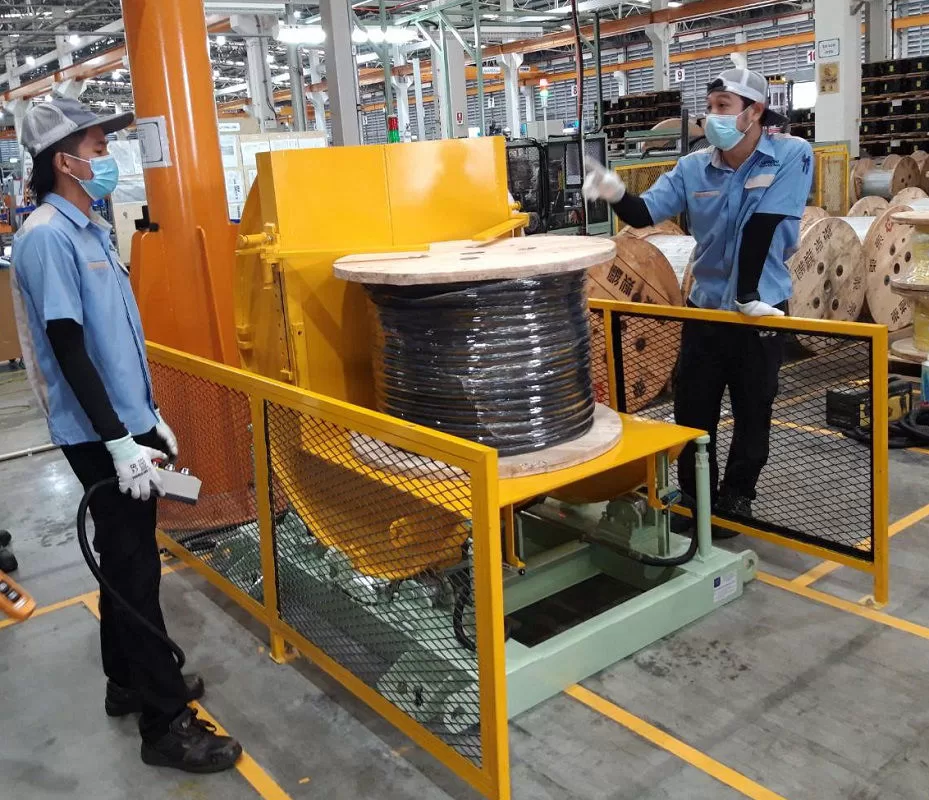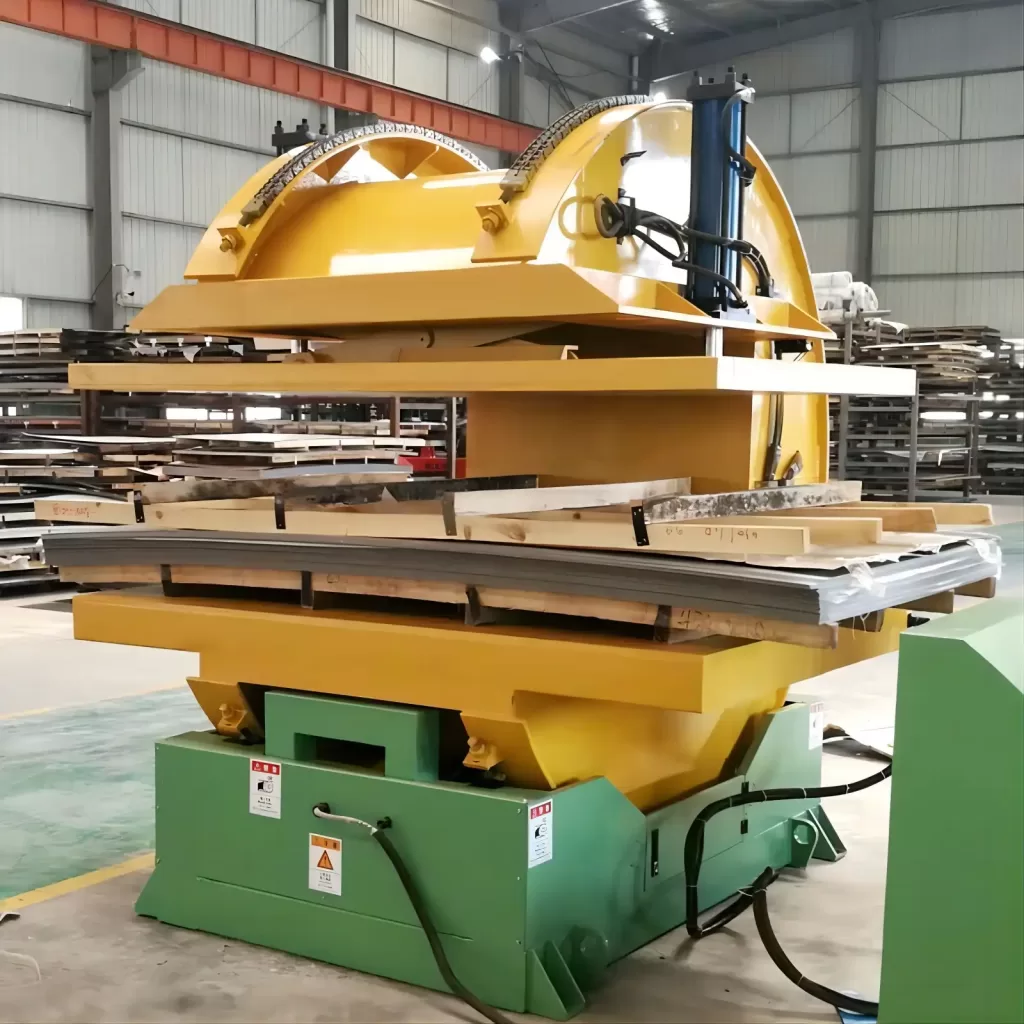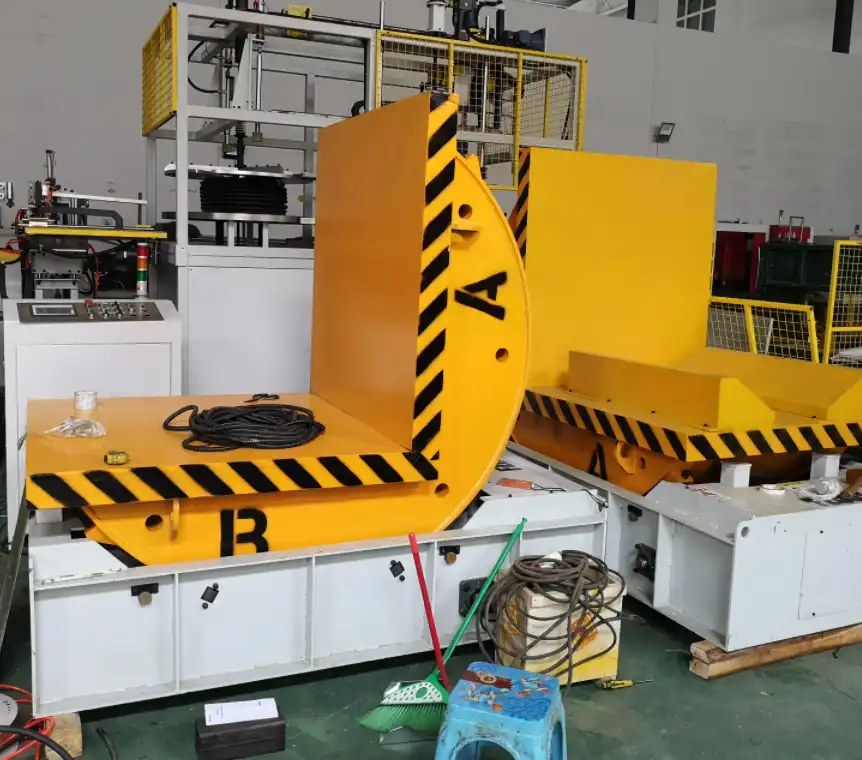Enhancing Shipping Center Sustainability with Advanced Packaging and Handling Automation

Are you looking for practical ways to reduce your shipping center's environmental impact while simultaneously boosting operational efficiency? As environmental consciousness grows, industries worldwide, particularly logistics and shipping, are actively seeking sustainable solutions to meet consumer expectations and regulatory pressures.
Minimizing waste, optimizing energy consumption, and streamlining processes are no longer just desirable goals; they are becoming essential for competitive and responsible operations. Fortunately, advancements in packaging and handling automation offer tangible pathways to achieve these objectives.
This guide explores how integrating technologies like automated stretch wrappers and pallet handling systems can transform your shipping center into a more sustainable and productive hub. Discover how strategic investments in automation contribute to waste reduction, resource optimization, and overall operational excellence, fostering long-term business value.
The Driving Forces Behind Sustainable Shipping
The push towards eco-friendly operations isn't just about environmental stewardship; it's increasingly a business imperative. Key drivers include:
- Growing Consumer Demand: Today's consumers actively seek out and favor businesses demonstrating environmental responsibility. Companies prioritizing waste reduction and green solutions often attract and retain environmentally conscious customers.
- Regulatory Landscape & Incentives: Environmental regulations are tightening globally. Governments often provide incentives, such as tax benefits or subsidies, encouraging businesses to adopt sustainable practices.
- Competitive Advantage: Demonstrating a commitment to sustainability can differentiate your company in a crowded marketplace, enhance brand reputation, and resonate strongly with customer values.
- Operational Efficiency & Cost Savings: Eco-friendly practices like energy conservation, material optimization, and waste reduction directly translate into lower operating costs and improved profitability.
Sustainable initiatives often go hand-in-hand with improvements in workplace safety, cleanliness, and overall organizational efficiency, creating a positive feedback loop that benefits the entire operation.

How Packaging and Handling Automation Boosts Sustainability
Transitioning to greener practices involves strategic choices about processes, materials, and technology. Integrating automated packaging and handling equipment offers significant advantages over purely manual operations, directly contributing to sustainability goals. These machines enhance efficiency, drive cost savings, and minimize environmental impact through several key mechanisms.
Key Technologies and Their Sustainable Impact
Let's examine specific automated solutions and how they contribute to a more eco-friendly shipping center:
1. Automated Stretch Wrapping Machines
Modern stretch wrappers offer substantial improvements over manual or semi-automatic methods, particularly in resource optimization and product protection.
- Optimizing Film Usage:
- Pre-Stretch Technology: Advanced wrappers incorporate pre-stretch mechanisms that elongate the film before it's applied to the load. This can significantly increase film yield (using less film to cover the same area), potentially reducing film consumption by 50% or more compared to manual wrapping. This directly translates to less plastic waste and lower material costs.
- Appropriate Film Thickness: Automation allows for consistent application, enabling the use of thinner, high-performance films without sacrificing load containment. Selecting the optimal film gauge for the application minimizes material usage while ensuring product safety.
- Ensuring Load Integrity & Reducing Damage: Automated wrappers apply film with consistent tension and placement, creating stable, secure loads. This significantly reduces the risk of product damage during transit compared to inconsistent manual wrapping. Less damage means fewer returns, replacements, and less associated waste (damaged goods, replacement packaging, extra shipping emissions).
- Improving Energy Efficiency: Newer automated systems are often designed with energy efficiency in mind, consuming less power per pallet wrapped compared to older machinery or the cumulative energy of manual labor for the same task. allowfullscreen>
2. Pallet Inverters and Changers
These machines facilitate the safe and efficient transfer or rotation of palletized loads, offering unique sustainability benefits.
- Enabling Pallet Swaps & Reducing Waste:
- Switching Pallet Types: Easily switch loads from wooden pallets to plastic, hygienic, or rental pallets (and vice-versa) without manual restacking. This is crucial for industries with specific hygiene requirements or for optimizing pallet pools, reducing the need for disposable pallets.
- Replacing Damaged Pallets: Quickly replace a broken pallet from beneath a load without disturbing the product stack, preventing potential product damage and saving labor.
- Product Recovery: Efficiently recover products from the bottom of a stack or invert loads for specific processing needs.
- Using a pallet inverter is particularly useful for handling fragile goods or meeting sanitary requirements, minimizing risk associated with manual handling.
- Minimizing Product Damage During Handling: Automated inversion or transfer is gentler and more controlled than manual methods or forklift maneuvering, significantly reducing the risk of product damage during these operations.
- Streamlining Workflows & Resource Use: Pallet inverters drastically reduce the time and labor required for tasks like pallet exchange or load inversion, freeing up personnel and equipment for other tasks and improving overall throughput with less energy expenditure per task.
Example of pallet handling efficiency:
3. Other Relevant Handling Equipment
Machines like mechanical or hydraulic upenders and tilters (as shown in the images) also contribute by enabling safe, efficient rotation and repositioning of heavy or awkward items (coils, molds, sheets). This prevents damage caused by improper manual handling and integrates smoothly into automated or semi-automated workflows, optimizing space and energy use.

Broader Strategies for Sustainable Shipping Centers
While automation is a powerful tool, achieving true sustainability requires a holistic approach:
- Implement Robust Recycling Programs: Establish clear processes for recycling stretch film, cardboard, strapping, and other packaging materials. Partner with waste management providers specializing in industrial recycling. Explore resources from organizations.
- Optimize Warehouse Layout: Design storage and processing areas to minimize travel distances for forklifts and personnel, reducing fuel/energy consumption and improving workflow efficiency.
- Employee Training: Educate staff on proper equipment operation, safe handling techniques, the importance of waste reduction, and their role in the company's sustainability goals.
- Continuous Improvement: Regularly review processes, measure key metrics (e.g., material usage per shipment, energy consumption), and seek opportunities for further optimization. [Industry reports] often highlight emerging trends and best practices in green logistics.
Realizing the Value of Sustainable Automation
Investing in packaging and handling automation delivers tangible benefits beyond environmental compliance:
- Significant Cost Savings: Reduced spending on packaging materials (especially stretch film), lower labor costs associated with manual tasks, decreased energy consumption, and fewer expenses related to product damage and returns.
- Enhanced Operational Efficiency: Faster throughput, more consistent packaging quality, improved worker safety, and better utilization of warehouse space.
- Improved Brand Reputation: Demonstrating a commitment to sustainability enhances your company's image, attracting environmentally conscious customers and partners.
- Future-Proofing Operations: Aligning with sustainable practices positions your business favorably for evolving regulations and market expectations in the logistics sector.
Conclusion: Paving the Way for Greener, More Efficient Shipping
Making your shipping center more sustainable is an achievable goal with significant operational and financial upsides. By strategically implementing advanced packaging and handling automation, such as stretch wrappers and pallet inverters, businesses can effectively reduce waste, minimize product damage, optimize resource utilization, and improve overall efficiency.
These technologies, combined with comprehensive recycling programs and a culture of continuous improvement, create a powerful framework for achieving both environmental responsibility and enhanced business performance. Evaluate your current shipping processes and explore how targeted automation can help you build a more sustainable, resilient, and profitable future.